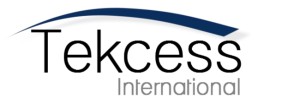Almost every program review ends with the senior executive at the table asking:
“Can’t we do it faster?”
There’s a good reason. Getting a jump on the competition by introducing a new capability translates directly into market share gains and premium pricing. Here are five ways to speed up your new product development and get to market faster.
1. Validate Early
Too often, customers don’t get their first exposure to your new product idea until you’re trolling for beta partners. That’s way too late. Learning that you’ve missed an essential requirement at this stage is sure to push out the product’s release. Start testing your product idea with customers at the requirements stage. Ensure the product’s target performance, timing, and pricing will result in commercial success. Do this way before you start cutting metal.
2. Start On-Time
You wouldn’t be the first to get a response from the development team that proposes a release date well beyond what the market environment demands. Your instinct may be to indict a lethargic product development process. But, the culprit might be that you didn’t anticipate the need in time for the organization to act on it. You may have started too late.
Make sure your product roadmaps cover a period longer than the average time it takes your company to develop a new product from scratch. This roadmap should include both top-level performance requirements and development strategy for each product it contains. From this roadmap, determine when fully vetted Market Requirements Documents (MRDs) are required to give the organization time to plan and develop each product in the timeframe needed.
3. Get Lean
Want to know the definition of lazy marketing? It’s taking the product specification, setting every item to be better than the competition, and sticking the result on the product roadmap. Asking product development to create better products than the competition on every measure is, at best, a recipe for being late and, at worst, a recipe for total failure.
Instead, make sure your roadmaps identify the critical-few performance parameters that drive your customers’ purchasing decisions. Set targets on those to create a competitive advantage. For all others, set targets to meet minimum market requirements. The result will be a successful product with a reduced development scope and a faster time to market.
4. Accelerate Transfer to Manufacturing
Your instincts might be to have engineering structure the bill of materials and handle all the parts ordering and assembly until the alpha system is complete. It seems faster to have the guys who best understand the still young design do all the work at this stage.
It’s not. When engineering carries the ball alone for too long, the rest of the organization will be at a standing start when it comes time to ramp. Instead, in the design phase, release parts through a bill of material (BOM) structure agreed to by operations, marketing, and service. Load the BOM structure into your Material and Resource Planning (MRP) system and order your parts through it. Also, have manufacturing techs work alongside engineering to build that first system.
It will feel like you’re slowing the project down by requiring first article purchases and build to flow through the MRP system.”But this practice drives early documentation quality and lubricates the manufacturing machine. It will also ensure that you don’t have a lot of rework and loose ends to deal with when the pressure’s on to start shipping systems.
5. Don’t be a Slave to the Process
No two programs are exactly alike. Timing, scope, risks, and priorities vary widely from program to program. If you want to slow your program down, use your enshrined process as though it were a government regulation.
It’s okay to reorder, skip, add, truncate, and expand the process elements to achieve a faster, higher-quality program. It’s what the best practitioners do. As long as the program manager communicates the process that will be followed and gets management and development team consensus, it’s perfectly fine.

